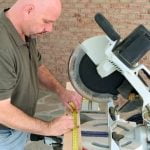Are my home improvements tax deductible for 2016? Homeowners may be wondering if they can get a tax break for the renovations and upgrades they’ve made to their homes.
In this article, we will delve into the world of home improvement tax deductions, exploring what qualifies for deductions, the difference between repairs and improvements, determining the cost basis of your home, and more. Whether you’re looking to make energy efficiency upgrades or wanting to know about record-keeping requirements, we’ve got you covered.
As a homeowner, understanding whether your home improvements are tax deductible can have a significant impact on your finances. This article aims to provide clarity on this often complex and confusing topic. By the end of this comprehensive guide, homeowners will have a better grasp of what improvements qualify for deductions and how to maximize their potential tax benefits.
From figuring out whether that new kitchen renovation is eligible for a deduction to uncovering common misconceptions about home improvement tax deductions, this article will equip homeowners with the knowledge they need to navigate the intricacies of claiming tax deductions for their home improvements. So let’s dive in and unravel the mystery surrounding home improvement tax deductions for 2016.
What Home Improvements Qualify for Tax Deductions
When it comes to home improvements, not all expenses are tax deductible. However, there are certain types of home improvements that may qualify for tax deductions. Understanding what qualifies for deductions can help homeowners maximize their tax benefits.
Energy-Efficient Improvements
One type of home improvement that may be eligible for a tax deduction is energy-efficient upgrades. This can include the installation of solar panels, energy-efficient windows and doors, insulation, and certain types of roofing. The government offers various tax credits for these types of improvements as a way to incentivize homeowners to make their homes more energy-efficient.
Medical or Accessibility-Related Modifications
In some cases, home improvements made for medical or accessibility reasons may also be tax deductible. This can include modifications such as adding wheelchair ramps, widening doorways, installing grab bars and handrails, and other changes to accommodate the needs of individuals with disabilities or medical conditions.
Home Office Expenses
For those who use a portion of their home exclusively for business purposes, certain home office expenses may also be tax deductible. This can include improvements to the space used for business activities, such as renovations or repairs to the designated area.
It’s important to note that not all home improvements will qualify for tax deductions. It’s best to consult with a tax professional or refer to the IRS guidelines for specific eligibility criteria and requirements when claiming home improvement expenses on your taxes in 2016.
The Difference Between Repairs and Improvements
When it comes to tax deductions for home improvements, it’s important to understand the difference between repairs and improvements. Repairs are considered to be any work that is necessary to keep your home in good condition, such as fixing a leaky roof or repairing a broken window. These expenses are generally not tax deductible.
On the other hand, home improvements are enhancements made to increase the value of your property, such as adding a new bathroom or renovating the kitchen. In some cases, these improvements may qualify for tax deductions.
The IRS has specific guidelines for what qualifies as a home improvement for tax deduction purposes. Generally, an improvement must add value to your home, prolong its useful life, or adapt it to new uses. This means that simple cosmetic upgrades like painting or installing new carpeting usually do not qualify for tax deductions. However, larger projects that significantly enhance the functionality or energy efficiency of your home may be eligible for tax benefits.
It’s important to keep in mind that determining whether a particular expense qualifies as a repair or an improvement can be complex. If you’re unsure about whether a specific project is eligible for tax deductions, it’s best to consult with a qualified tax professional who can provide guidance based on your individual circumstances.
The tax laws surrounding home improvement deductions can be intricate and nuanced, so seeking expert advice can help ensure that you maximize any potential tax benefits while remaining in compliance with IRS regulations.
How to Determine the Cost Basis of Your Home
When it comes to determining the cost basis of your home, it is important to understand that only the improvements made to your home are eligible for tax deductions. The cost basis of your home generally includes the purchase price, plus certain settlement or closing costs, and the cost of any substantial improvements. Knowing the cost basis of your home is crucial as it helps in calculating the amount of gain when you sell your home.
To determine the cost basis of your home, you will need to gather all related documents such as the purchase contract, mortgage closing statement, receipts for any improvements made to the property and any insurance claims filed for casualty losses. These documents will help in establishing the original purchase price and any additional costs incurred during its acquisition.
It’s important to note that regular maintenance and repairs do not increase the cost basis of your home. However, if you have made improvements that have added value to your property or prolonged its useful life, then these expenses can be included in your cost basis. Improvements such as adding a room, remodeling a kitchen or bathroom, replacing a roof, installing new heating or air conditioning systems are examples of expenses that can be added to your cost basis.
| Documents | Information |
|---|---|
| Purchase contract | Original purchase price |
| Mortgage closing statement | Closing costs |
| Receipts for improvements | Cost of improvements |
The Home Office Deduction and Home Improvements
When it comes to tax deductions for home improvements, one important aspect to consider is the home office deduction. If you use a portion of your home exclusively for business purposes, you may be eligible for a home office deduction. This could include expenses related to the maintenance, repair, or improvement of that specific area.
In order to qualify for the home office deduction, the space must be used regularly and exclusively as your principal place of business. This means that if you conduct most of your work from a designated area in your home, such as a separate room used only as an office, you may be able to deduct a portion of certain home improvement expenses related to that space.
It’s important to keep in mind that not all home improvements will qualify for the home office deduction. Generally, improvements that are directly related to your business activities, such as renovating your home office or installing built-in shelving for business use, may be eligible.
However, regular repairs and maintenance that benefit the entire house rather than just the designated office space may not qualify. As always, it’s best to consult with a tax professional to determine which expenses are deductible based on your specific situation.
| Home Office Deduction Criteria | Eligible Expenses |
|---|---|
| Regular and exclusive use of the space | Renovations directly related to business use |
| Principal place of business | Built-in furnishings and equipment for business purposes |
Energy Efficiency Upgrades and Tax Credits
When it comes to making energy-efficient upgrades to your home, not only can you save on your utility bills, but you may also be eligible for tax credits. This can make these upgrades even more appealing, as they essentially help you save money in more than one way. In 2016, there are several energy efficiency improvements that qualify for tax credits, and it’s important to understand which ones are eligible.
Qualifying Energy Efficiency Upgrades
Some of the common energy efficiency upgrades that are eligible for tax credits in 2016 include installing solar panels, geothermal heat pumps, solar-powered water heaters, and small wind turbines. These upgrades not only reduce your carbon footprint but also improve the energy efficiency of your home, making them environmentally-friendly and cost-saving at the same time.
Claiming Tax Credits for Energy Efficiency Upgrades
In order to claim tax credits for your energy efficiency upgrades, you need to ensure that they meet the eligibility criteria set by the IRS. For example, the equipment must meet certain energy efficiency standards and be used in your primary residence. Additionally, keep in mind that tax credits have specific limitations and requirements, so it’s crucial to review IRS guidelines or consult with a tax professional to understand how much credit you may be eligible for.
Maximizing Your Tax Benefits
To maximize your tax benefits related to energy efficiency upgrades in 2016, it’s essential to keep records of all relevant expenses and documentation related to the improvements. This includes receipts for materials and labor costs, as well as any manufacturer certifications or other required documentation. By keeping thorough records of these expenses, you can ensure that you’re able to claim all eligible deductions when filing your taxes.
Asking “are my home improvements tax deductible for 2016” is a common question among homeowners considering renovations or upgrades with potential financial implications. Understanding what qualifies for tax deductions when it comes to home improvements is crucial so that homeowners can take full advantage of potential deductions when filing their taxes.
Record-Keeping Requirements for Home Improvement Expenses
When it comes to claiming tax deductions for home improvements, keeping good records is essential. Whether you’re making small upgrades or major renovations, maintaining thorough documentation will help you maximize your potential tax benefits. Here are some record-keeping requirements to ensure that your home improvement expenses are tax deductible for 2016:
- Receipts and Invoices: It’s important to keep all receipts and invoices related to your home improvement projects. This includes materials, labor costs, and any permits or inspection fees. Make sure the documents clearly detail the date of purchase, the description of the items or services, and the amount paid.
- Before and After Photos: Taking before and after photos of your home improvements can be valuable evidence when it comes to proving the work that was done. These visual records can demonstrate the scope of the project and provide concrete evidence of the improvements made.
- Contracts and Agreements: If you hired a contractor or professional service provider for your home improvements, keep copies of any contracts or agreements. This will help support your deduction claims and provide information about the work performed.
Proper record-keeping not only ensures that you have the necessary evidence to claim tax deductions for your home improvements, but it also helps protect you in case of an audit by the IRS. By maintaining organized and detailed records, you can confidently answer any questions about your eligible expenses when filing your taxes.
In addition to physical documentation, consider creating a digital file or spreadsheet to track all expenses related to your home improvements. This will make it easier to manage and organize your records throughout the year, making tax time less stressful. Remember that accurate record-keeping is crucial not only for claiming deductions but also for maintaining compliance with IRS regulations.
Common Misconceptions About Home Improvement Tax Deductions
Many homeowners wonder, “Are my home improvements tax deductible for 2016?” It’s important to understand the common misconceptions surrounding home improvement tax deductions to ensure you are maximizing your potential tax benefits. Here are some key misconceptions to be aware of:
- All home improvements are tax deductible: Many homeowners believe that any and all home improvements they make will qualify for a tax deduction. However, this is not always the case. Only certain types of home improvements actually qualify for tax deductions, so it’s important to understand which expenses can be claimed on your tax return.
- Home repairs are the same as home improvements: Another misconception is that any repair or maintenance work done on your home can be counted as a tax deduction. The IRS makes a clear distinction between repairs and improvements when it comes to tax deductions, so it’s essential to understand the difference in order to accurately claim your expenses.
- Home improvement tax deductions are a dollar-for-dollar reduction in taxes owed: While taking advantage of home improvement tax deductions can certainly lower your taxable income, it’s important to note that these deductions do not directly reduce your taxes owed on a dollar-for-dollar basis. They can help lower the amount of income subject to taxation, but they do not directly offset taxes owed.
By understanding these common misconceptions, you can ensure that you are correctly navigating the complexities of home improvement tax deductions and maximizing your potential tax benefits. It’s crucial to consult with a qualified tax professional or reference the IRS guidelines if you have specific questions about what is and isn’t eligible for a deduction when it comes to your home improvement expenses.
Tips for Maximizing Your Home Improvement Tax Deductions
In conclusion, understanding whether your home improvements are tax deductible for 2016 can save you money and alleviate some of the financial burden associated with home renovations. By making informed decisions about which home improvements qualify for tax deductions and properly documenting expenses, homeowners can maximize their tax benefits.
It is important to remember that not all home improvements are tax deductible. Only those that increase the value or extend the life of your property may qualify for deductions. Additionally, distinguishing between repairs and improvements is crucial, as only improvements are eligible for tax deductions.
Furthermore, maximizing your home improvement tax deductions requires careful record-keeping and documentation of expenses. Keeping receipts, contracts, and other pertinent documents will not only support your claims but also provide peace of mind in the event of an audit.
Ultimately, consulting with a tax professional or accountant can provide valuable guidance on how to take advantage of home improvement tax deductions. With proper planning and knowledge of the guidelines set by the Internal Revenue Service (IRS), homeowners can potentially save money on their taxes while enjoying the benefits of a renovated living space. So when asking yourself “are my home improvements tax deductible for 2016?” be sure to take advantage of potential savings through proper planning and record-keeping.
Frequently Asked Questions
Can You Use Home Improvements as a Tax Write Off?
Yes, home improvements can sometimes be used as a tax write off. However, it typically depends on the nature of the improvement and whether it qualifies as a capital improvement or a repair expense.
How Do I Prove Home Improvements Without Receipts?
Proving home improvements without receipts can be challenging, but it’s not impossible. Other documentation such as credit card or bank statements, contractor agreements, before-and-after photos, or appraisals can help support your claim.
Is Painting a House Tax Deductible?
Generally, painting a house is considered a maintenance expense rather than a tax-deductible improvement. However, if the painting is part of a larger home improvement project that qualifies for a tax deduction, then it may be included in the deduction.

I’m thrilled to have you here as a part of the Remodeling Top community. This is where my journey as an architect and remodeling enthusiast intersects with your passion for transforming houses into dream homes.





